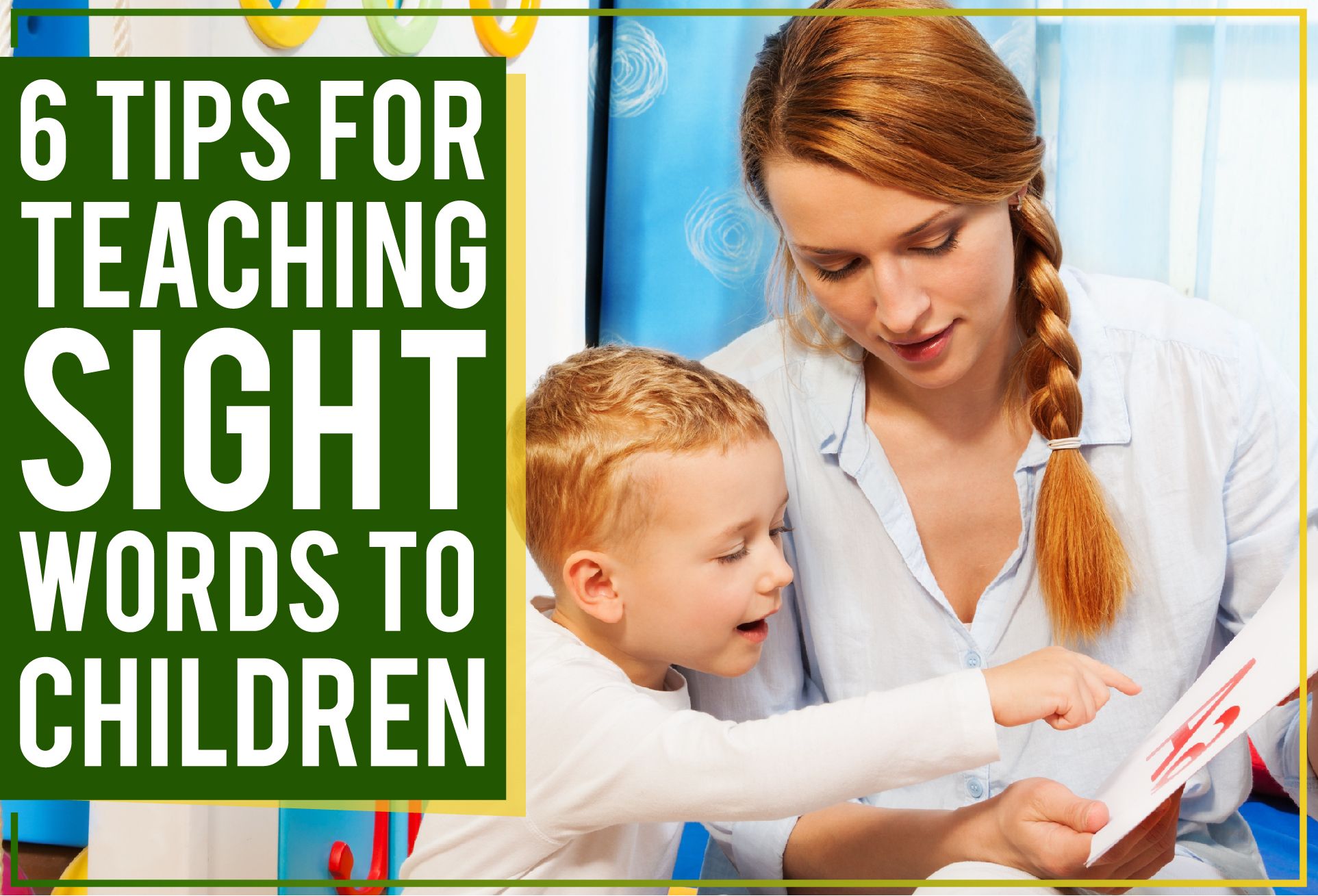6 Tips for Teaching Sight Words
“Sight words” belong to a group of high-frequency words in the English language. When children learn these words, it helps to increase their reading fluency and comprehension. In this post, we will provide tips for teaching sight words to children. But first, let’s examine what sight words are.
What are ”Sight Words”?
These are words that are beneficial to young children, especially those who struggle with reading. The reason they are called “sight words” is that they are seen frequently in English text. Learning these words eliminates the attention that would be needed for kids to process unfamiliar words.
Learning sight words requires time and effort in order to master. But once children become familiarized with them, they can keep up with reading lessons more easily.
Typically, sight words are introduced during first or second grade, as this is when children start to learn how to read. Kids who become adept at reading from an early age tend to learn sight words quickly.
The average children's book comprises approximately 75% of sight words. This is why it’s so important for children to learn sight words early on.
How do children learn to read?
Before acquiring literacy skills, first children need to learn sounds, letters of the alphabet, and word recognition, and this happens through conversations and reading together from an early age.
Children begin to read once they are able to recognize each letter, then a group of letters, and then connect the sounds associated with each letter. During this process, children begin to decode text.
Saying words aloud requires tremendous attention and cognitive energy. This is often why children tend to read slowly at first. During this stage, they are only acquainted with a small handful of words.
Once children sound out a word repeatedly, sight-reading requires less effort and comes more naturally.
6 Tips for Teaching Sight Words
You will find plenty of sight words in the books that your child reads. Emphasize sight words by searching for them together. Dr. Seuss books contain plenty of sight words, so these are an excellent place to start. Constant exposure is key. You can provide plenty of exposure by pointing out each word you come across in a book, rather than giving kids a list of words to learn (which can be boring.)
Place sight words in your child's room. When kids have visual reminders, it enables them to learn words quickly. Write words on colorful paper that draws their attention. Include the definition of each word.
Teach children how to use sight words. Whenever children write, make it a point to use sight words repeatedly. This might happen while children are drawing, during a spelling drill, or typing. Keeping kids exposed to these words solidifies their learning. Sight words can be written alone or as part of a simple sentence.
Revisit words constantly. Kids benefit from practice and repetition in order to help them recall the meanings quickly. Repetition is key when it comes to helping the sight words become ingrained in their minds. This process is especially valuable to children with reading disabilities, like dyslexia.
Engage them in typing activities. Even children at an early age can start typing as they learn how to write. Their fine motor skills should enable their hands to navigate a keyboard effectively. For children who have dyslexia or dysgraphia, typing can be especially helpful when it comes to facilitating learning because it compels them to use their muscle memory to aid with spelling. We recommend using the Touch-type Read and Spell course, in which you can choose a module consisting of sight words only.
Have patience. Learning sight words does not happen overnight. Don't give up, even if your child learns slowly. Help your child remain engaged and attentive so he or she will be more likely to absorb the content, even if it takes time.
Bonus: Teaching Sight Words with Movement
Skywriting. Have children spell sight words by tracing each enlarged letter with his or her fingers.
Body spelling. Invite children to form letters using their hands, feet, and entire body as they spell each word.
Stand and jump. Ask children to spell each word out loud. For each consonant, they remain in a standing position. For each vowel, they jump.
At Mrs. Myers' Reading Room, we use a variety of fun and exciting methods when teaching sight words. Contact us today for more information!





